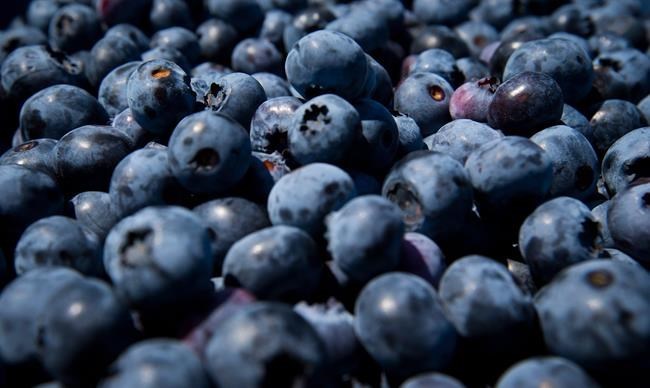Nature Boy reminded me last week that the Apollo 11 spacecraft landed on the moon 51 years ago. On July 20, 1969, Buzz Aldrin and Neil Armstrong arrived on the moon. A few hours later, on July 21, they went for a walk.
As anniversaries go, 51 is usually overlooked, overshadowed by the Big Five-Oh. However, Nature Boy was reminded of the event by the ripening blackberries we passed down the street.
“I spent the day of the moonwalk kitted up in my grandfather’s welding coat and helmet in the middle of a blackberry thicket out near Agassiz,” he says. “It was my family’s annual blackberry-picking trip, and in that get-up, I felt like I was wearing a spacesuit, too.”
Nature Boy ended that long-ago day the same way so many others did: at home, in front of a small, boxy TV, watching grainy black-and-white footage of “One small step for man, one giant leap for mankind.”
Nature Boy’s evening also included fresh-picked blackberries on ice cream, further cementing the memory connection between the 1960s space race and the berry.
It seems blackberry season peaked earlier in 1969 than in 2020. Regardless, we are now at the height of berry season generally. The parking lot at Galey’s farm stand is crowded every weekend, and now that we’re between crops, there aren’t enough strawberries to go around in the quantities people want.
It seems Victoria-area residents, like Canadians in general, eat far more strawberries than we grow. According to 2014 numbers from GrowBC, British Columbia produces about one-twelfth of Canada’s strawberries, or about 1.5 million kilograms, every year. However, the 18 million kilograms of strawberries produced in Canada come nowhere near meeting domestic demand for the berry.
The Root Cellar generated a small, pandemic-limited flurry of customers the morning it announced a sale on blueberries. The 5-lbs-for-$9.99 sale — advertised on its streetside sign at first as “today only” — stretched over several days and no doubt attracted a number of blueberry enthusiasts.
We’re fortunate to be so near Canada’s blueberry epicentre. According to the British Columbia Blueberry Council, B.C. produces more than 95 per cent of Canada’s cultivated blueberries. Although the majority of the commercial producers are in the Fraser Valley, head out to Metchosin or up the Oldfield Road if you’re interested in buying direct from a local farmer.
Raspberries are the other popular berry crop at its height. However, B.C.’s raspberry industry is not doing well. In recent years, the crop has ranged from seven to 10 million kilograms — down from the 19 million kilograms routinely picked and shipped three decades ago.
The fruit is fragile, the plants are fiddly, and the variety grown here lasts only days after being picked.
Low-cost imports from places like Chile and Mexico are pushing farmers to rethink their raspberry investments.
If you’re like me and think raspberries are summertime concentrated in small, juicy packages-o’-flavour, buy lots from local growers. Eat them fresh, freeze them, or make jam — whatever it takes to keep the growers growing the berries.
Other berries also on offer include marionberries, tayberries and cloudberries. Wild berries like huckleberries are rarely found for sale here, and salal berries, although common, go quickly from mouth-puckering to mealy.
Nature Boy claims the window for salal-berry deliciousness lasts about half an hour each summer, but a friend who grows them in her backyard for eating says she harvests them over a few weeks as each berry ripens.
Thimbleberries can be found now but rarely in large numbers. They’re also extremely soft, so don’t last. The fuzz averse, as Nature Boy is, may want to give them a pass.
Other wild berries found in the region are already finished.
“When I was a kid, I had no idea ripe salmonberries were red,” Nature Boy continued to reminisce. “We’d pick and eat them as soon as they turned orange.”
“Didn’t their sourness give it away?” I asked.
“They’re not like blackberries or salal berries, which are really, really sour when unripe.” He paused. “They tasted good to us ... but we didn’t know what a ripe salmonberry was supposed to taste like.”



